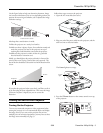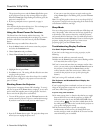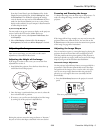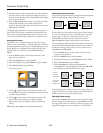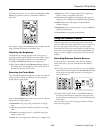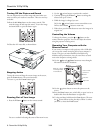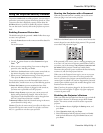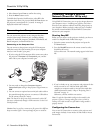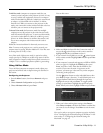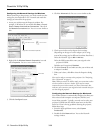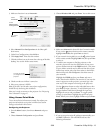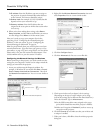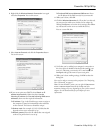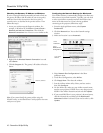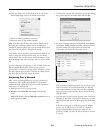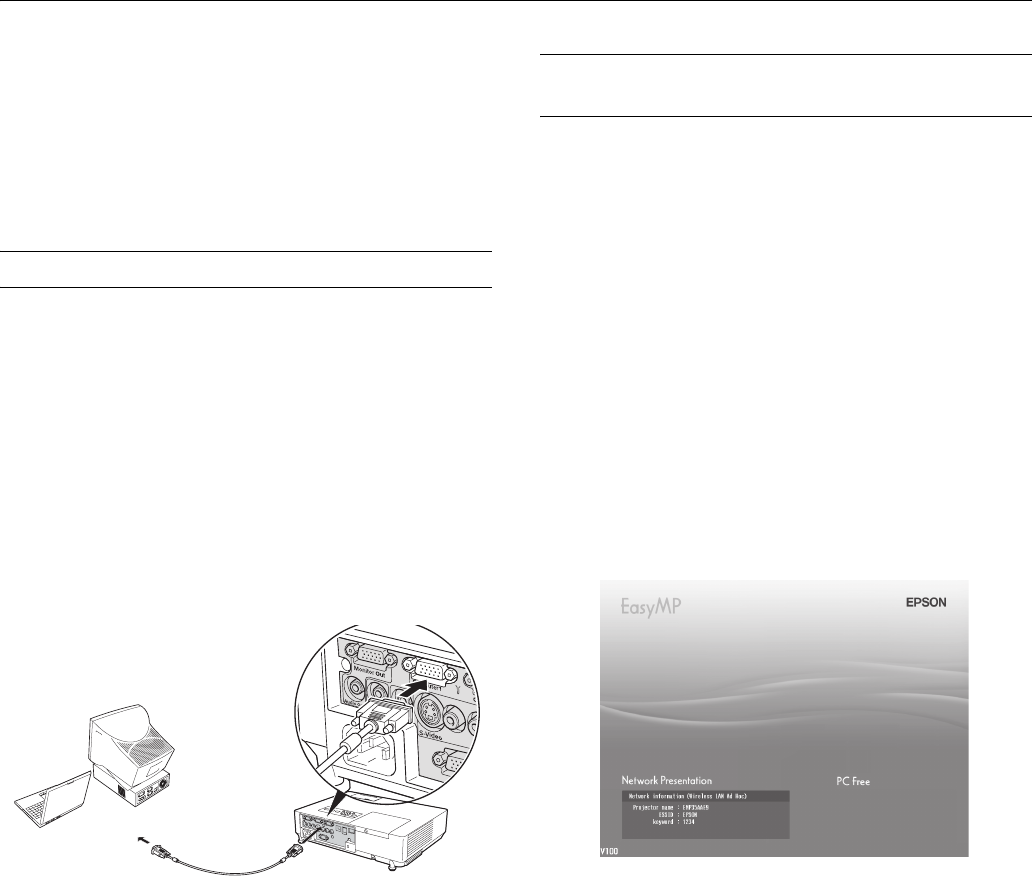
PowerLite 1810p/1815p
10 - PowerLite 1810p/1815p 3/08
4. Select
Yes and press Enter to confirm the setting.
5. Press the
Menu button to exit.
To disable the Operation Lock function, select
Off in the
Operation Lock menu. Or press and hold the
Enter button on
the projector’s control panel for 7 seconds. A message is
displayed and the lock is released.
Connecting to a Computer
You can connect the projector to any computer that has a
standard video output (monitor) port, including desktop
models, PC notebook computers, MacBook, PowerBook, and
iBook computers, and hand-held devices.
Connecting to the Computer Port
You can connect to the projector using the VGA computer
cable that came with it (the monitor port on your computer
must be a mini D-sub 15-pin port).
1. If you’re using the VGA computer cable, connect one end to
the projector’s
Computer1 or Computer 2 port, and the
other end to your computer’s monitor port.
2. You may need to change the Computer1 Input or
Computer2 Input setting in the projector’s Signal menu to
RGB.
3. You can connect an optional stereo mini-jack audio cable to
play sound through the projector, or connect a USB cable to
use the remote control as a mouse.
Note: The PowerLite 1815p can also be connected to a third PC
(but not to a Macintosh) through a USB connection. See the User’s
Guide for details.
Caution: Don’t try to force a connector to fit a port with a different
shape or number of pins. You may damage the port or connector.
Presenting Through a Wireless
Network (PowerLite 1815p only)
Using EMP NS Connection, you can project images shown on
your computer screen—including text, graphics, and video—
directly to your audience without connecting the projector to
your computer. Before you begin, make sure you’ve installed
the wireless network module and the EMP NS Connection
software on your computer.
Starting EasyMP
Before you can connect to the projector wirelessly, you have to
switch it to EasyMP mode. Follow these steps:
1. Point the remote control at the projector and press the
P
Power button.
2. Press the
EasyMP button on the remote control to select
EasyMP as the source.
You see this screen. The network settings appear in the lower
left.
3. If you’ve already set up your computer and projector for the
mode you want to use—Ad Hoc mode (also called
computer-to-computer mode) or Access Point mode (also
called infrastructure mode)—skip to “Projecting Over a
Network” on page 17.
Otherwise, continue with the next section.
Note: Use only the Epson 802.11a/b/g wireless module in the
projector. If you see a message asking you to insert a LAN or
memory card, check to make sure your 802.11 a/b/g module is
properly inserted.
Configuring the Connection
You can use NS Connection to connect to the projector and
send images wirelessly in two modes: Ad Hoc mode or Access
Point mode.




